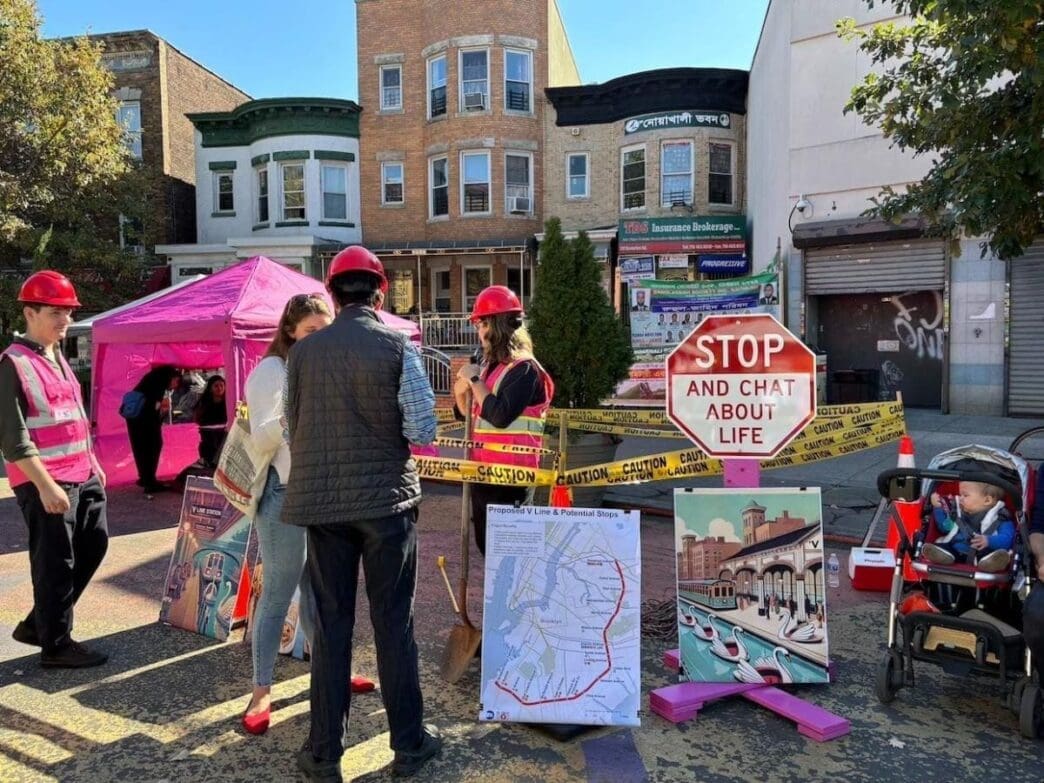In the enchanting world of romantic comedies like ‘Hot Frosty’ and ‘Notting Hill,’ there’s an often overlooked but essential player in the love story—the city itself. Recent observations by two New York City urban planners, Daphne Lundi and Louise Yeung, have highlighted how the design of our urban environments can ignite romance, prompting them to champion the concept of ‘romantic urbanism.’
In movies such as ‘When Harry Met Sally’ and ‘Rye Lane,’ the cityscape plays a crucial role in bringing characters together, offering more than just a backdrop but an active space for connection. Lundi and Yeung, who are neighbors, began exploring this idea during the pandemic lockdown while watching these movies in each other’s apartments. The notion struck a chord; they realized that well-designed urban areas not only enhance on-screen romance but could also impact real-life connections.
Their insightful theory, first penned in a 2023 essay titled ‘Romantic Urbanism,’ has since evolved into a broader movement. The essence of their idea is that cities should be designed to encourage human connection and intimacy. They argue that during the pandemic, many felt isolated in their homes as remote work became more prevalent, underscoring the need for urban spaces that foster social interactions.
[instagram-embed-display instagram_id=’DA-_vReOYtD’]
The pair recently organized an event in Brooklyn, whimsically dubbed the New York City Department of Tenderness, to showcase their vision for a romance-friendly urban environment. This gathering included several inventive proposals, such as Schuyler deVos’s idea for a ‘V line’ train connecting Brooklyn and Queens, aimed at easing long-distance relationships. Attendees like Henry McKenzie were drawn to these concepts, sharing personal anecdotes about the challenges of maintaining relationships across boroughs and the longing for communal spaces.
The conversation at the event underscored a growing desire for cities that don’t just serve as places of residence but as spaces that actively promote love and connection. Participants like Trey Shaffer expressed a wish for more pedestrian-friendly spaces, akin to New York’s romantic bridges, while others suggested cleaner public areas to encourage spontaneous social interactions.
Lundi and Yeung’s initiative has resonated widely, with around 80 submissions received, including essays and ideas for public events. These submissions explore diverse themes, from utilizing New York’s paratransit service to fostering bonds in corner bodegas. Through their efforts, the planners hope to inspire fellow urban designers and policymakers to prioritize human connection in their city designs.
Louise Yeung points out that while their primary roles involve building safe and accessible urban infrastructure, the importance of love and connection often gets sidelined in policy-making. Their work prompts the question of how cities can be designed to nurture genuine care and affection among their inhabitants. As Clio Andris from Georgia Tech emphasizes, creating spaces where people naturally want to gather is key.
Lundi and Yeung’s ‘romantic urbanism’ champions a vision where cities foster not just community but also connection and love. By reimagining urban design, they hope to transform real-world cities into spaces that inspire the kind of spontaneous, serendipitous encounters often seen in rom-coms. It’s a call to rethink how we live and interact within our urban environments.
Source: Yahoo ˙ Youtube – Instagram







